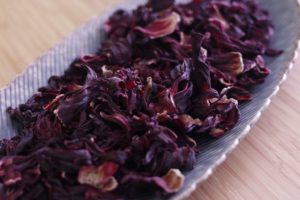Rosa Sinensis, also known as Hibiscus dye is one of the nicest and most interesting colors you can acquire from a plant. That’s why it makes a lot of sense to create your own natural hibiscus dye. It looks great and you can always adapt the color to suit your needs. These plants grow in bushes and prefer a temperate or a tropical climate.

Things to know about the Hibiscus dye
When you crush the Hibiscus plant you will notice that it automatically turns into black and it comes with a purplish dye. This dye is used for blacking shows, in many parts of China the same dye is also used for changing the hair color. The idea is that you can use the Hibiscus dye everywhere in the world. It’s natural and it doesn’t come with side effects even if you use it on your own hair.
A thing to keep in mind is that you need to clean up the Hibiscus plant to ensure everything works the way you want. The last thing you want is any kind of impurities. Unfortunately that can appear when you are working with plants. Just try to make the right pick and you will be just fine for the most part.
If you’re looking to create a powerful hibiscus natural dye, you do need to wait for a little bit for it to cool off once you prepare everything. When you use this dye on clothes it can be a very good idea to use mordant. The advantage is that it will help absorb the color and keep it in the long run.
Preparing the Hibiscus dye
- Make sure that you take the flower heads and simmer them gently in the filtered water
- You will have to do that for around 30 minutes
- In case the water is too hot, the dye loses its pink hue and it will become brown. The color intensity will differ based on how much dye you use when compared to the yarn or fiber. Too much dye will bring in a very intense color, too much yarn will offer a lower quality result and a faded color.
- After you created the Hibiscus dye, you want to remove any plant leftovers and materials. This way you will just have the dye liquor and it will be fine to use as you see fit.
- As we mentioned earlier, the fiber/yarn needs to be pre-mordanted to ensure that the color is acquired very fast.
The Hibiscus dye is very distinctive and the color can be adapted based on how much dye you use or how much yarn you plan to use as well. You can experiment with some small portions of yarn before you find the right color. This takes a bit of getting used to. Every time you create the Hibiscus dye you will notice that results will differ quite a bit. So taking your time and adapting everything the right way can be well-worth it!